Dutch Patent Application
On this page we outline the process to follow to obtain a Dutch patent.
- Intake
- Order confirmation
- Draft patent application
- Filing and formalities
- Waiting for novelty search
- Reporting novelty search
- Considering foreign application(s)
- Patent grant and publication
- Key to flow chart
Intake

We begin with an intake interview, at which we discuss the invention. This may take place in our office or by e-mail or telephone, according to the circumstances. We use this opportunity to find out what you consider to be new about the invention and give you our opinion on whether the invention is patentable and/or, based on the state of the art in the field of the invention, whether it has a chance of success. If the content of the invention is not completely clear, we may decide to conduct a search first. The key question to answer is “what exactly do you want to prevent your competitor from doing?” This is because the main purpose of a patent is to secure exclusivity.
Order confirmation

After intake, we send an order confirmation stating what we are going to do and the amount of our charge, and we start work as soon as we reach agreement on it. The order confirmation and the amounts quoted are valid for one month.
Draft patent application
Once we have reached agreement, we draft a patent application. This is a technical legal text which consists of:
- a specification of the invention, explaining which technical problem the invention solves, compared with the prior art
- provisional figures illustrating the invention, and
- claims (precise definitions of exactly what is covered by the application for exclusivity). There is always a series of consecutive claims, each more specific than the last. The first claim describes what we are seeking protection for, while the next describes what we seek to protect if the broadest claim is found not to be novel or inventive.
Normally we need two to three weeks to complete this
When we send you the draft, we request you to examine it carefully and let us know any desired additions or modifications. We realise that legal language is not easy reading. Please give us a call if the text is unclear or, of course, if the text is clear but you wish to amend it. We will adjust the draft as necessary and resubmit it to you for approval.
Filing and formalities

As soon as you agree, we will file the patent application with the Netherlands Patent Office and authorise debiting of the due fees from our deposit account. From then on, the invention enjoys provisional protection and you will receive a confirmation of filing from us.
Meanwhile, we commission formal figures. These are black-and-white line drawings which comply with the strict conditions imposed by the Netherlands Patent Office for this purpose. We may also have to supply further information which was not available to us at the time of filing. This often consists of the full names of the inventors or their places of residence.
As soon as we receive confirmation from the Netherlands Patent Office that there are no further irregularities of form, we send you an invoice for our work
Waiting for novelty search

After the application has been filed, the Netherlands or European Patent Office conducts a novelty search. We generally receive the results within 10 months of filing the patent application.
Reporting novelty search

The results of the novelty search consist of publications (patent publications and/or other documents) and an opinion of the examiner who carried out the search.
We review the publications and the examiner’s opinion and send you a report, giving our opinion of the relevance of the publications found. We state how we assess the strength of the patent to be granted and estimate the chances of success of any foreign patent applications. Whatever the examiner’s opinion, we often identify/predict possibilities of obtaining patents abroad. Our advice in this regard can be very useful when you are considering whether to file foreign patent applications.
Considering foreign patent application(s)

An applicant for a patent in one country has one year to apply for patents for the same invention in other countries. This is called the right of priority, and it ensures that, for the purpose of assessing novelty and inventiveness, the foreign patent applications are deemed filed on the same date as the earlier application. The priority right lapses after this one-year period. It then becomes rather more difficult to apply for a patent abroad, because the earlier application is treated as a prior publication. The fact that it is the work of the same inventor does not alter this.
It is therefore important to decide whether to apply for a patent outside the Netherlands as well, within a year. If you are interested in certain countries, we will be pleased to consider the best approach to obtaining patents in those countries. Sometimes it is preferable to obtain a patent as quickly as possible. Sometimes the total costs have to be minimised, and sometimes it is desirable to postpone choices as long as possible. Together we work out the strategy most appropriate to your situation. Of course, we give you a timely reminder of the expiry of the priority year.
Patent grant and publication

Eighteen months after filing of the Dutch patent application, it is published and the patent is granted. This formality always takes place, irrespective of the findings of the novelty search. The reason is that the Netherlands operates a “registration system” for patents. For more about the ‘ins’ and ‘outs’ of this system, see this article.
Your patent is in force from the time when it is granted. The Patent Office sends us a patent certificate, which we forward to you. To keep the patent in force, maintenance fees become payable from year 3 after filing the application. We also give you annual reminders of this and, unless you inform us that the patent can lapse, we ensure that the maintenance fees are settled promptly each year.
Key to flow chart
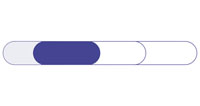
The central bar, running from left to right, maps out the procedure being followed.
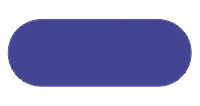
The dark blue oval marks the stage we have currently reached in the procedure.
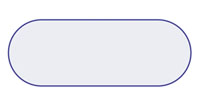
A pale blue oval indicates a completed stage.
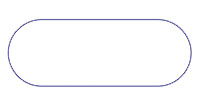
A white oval shows a future stage.
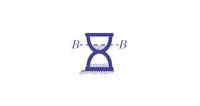
A sand timer denotes that an agreement, or official documents, for example, are pending.
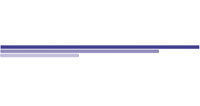
Any fixed periods are marked above the central bar.
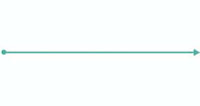
This stage is carried out by the client.
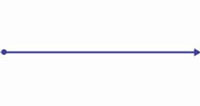
This stage is carried out by Patentwerk.